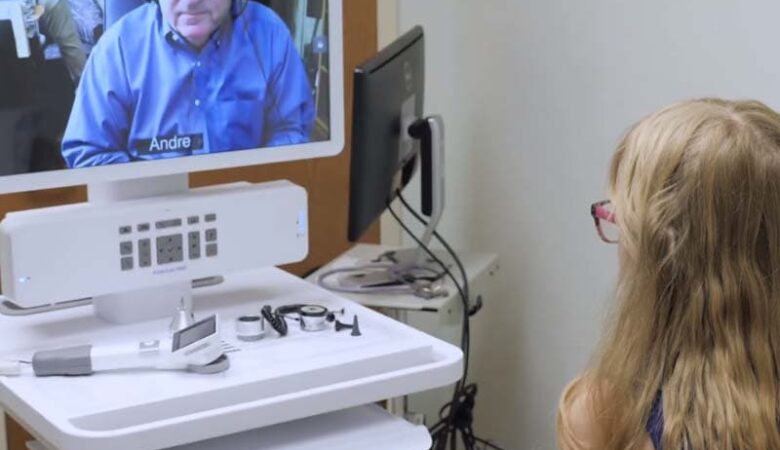Attention deficit hyperactivity disorder (ADHD) is a neurodevelopmental disorder characterized by symptoms of inattention, hyperactivity, and impulsivity. Understanding its prevalence and the statistical trends is crucial for not only healthcare professionals, educators, and policymakers, but everyone interested in exploring mental health and addressing stigma. This article explores ADHD prevalence around the world, delves into facts and statistics on ADHD in the US, and provides additional insights.
ADHD Prevalence Around the World
ADHD is a condition recognized worldwide, though its prevalence varies significantly across different regions. It happens because of differences in diagnostic criteria, healthcare access, and cultural perceptions of mental health.
Global Statistics
- North America: Studies indicate that in North America, the prevalence of ADHD in children is 11.3%.
- Latin America: Prevalence rates in Latin America vary, with estimates between 10% and 20.4% in different populations.
- Europe: European countries show a lower prevalence, typically between 2% and 5%. This variation may be influenced by different diagnostic practices and healthcare systems.
- Asia: Prevalence rates in Asian countries are approximately 4.2% to 6.5%. Cultural differences in reporting and diagnosing ADHD contribute to the figures.
- Africa: Data from African nations is limited, but available studies suggest a prevalence rate of around 1.3% to 3%.
Contributing Factors
Several factors contribute to the varying prevalence rates of ADHD globally:
- Diagnostic Criteria: Different countries may use varying diagnostic criteria, such as the DSM-5 (Diagnostic and Statistical Manual of Mental Disorders) or the ICD-10 (International Classification of Diseases).
- Healthcare Access: Access to mental health services plays a significant role in diagnosing and treating ADHD. Countries with better healthcare infrastructure tend to have higher reported prevalence rates.
- Cultural Perceptions: Stigma and cultural beliefs about mental health can influence the willingness of individuals to seek diagnosis and treatment.
Facts and Statistics on ADHD in the US
The United States has conducted extensive research on ADHD, providing a comprehensive understanding of its prevalence and impact.
Prevalence in Children and Adolescents
According to the Centers for Disease Control and Prevention (CDC), approximately 9.4% of children aged 2-17 years in the US have been diagnosed with ADHD. This figure translates to about 6.1 million children.
- Age Distribution: The prevalence of ADHD diagnosis increases with age, being 2% in children aged 3-5 years, 10% in children aged 6-11 years, and 13% among adolescents of 12-17 years.
- Gender Differences: Boys are more likely to be diagnosed with ADHD than girls, with a ratio of about 2:1. Approximately 12.9% of boys and 5.6% of girls have been diagnosed with ADHD.
ADHD in Adults
ADHD is not limited to children. Many adults continue to experience symptoms that affect their daily lives. The National Institute of Mental Health (NIMH) estimates that around 4.4% of adults in the US have ADHD. Despite its prevalence, ADHD in adults is often underdiagnosed and undertreated. Many adults may not realize they have ADHD until they seek treatment for related issues such as anxiety or depression.
Treatment and Management
Effective management of ADHD often involves a combination of medication, behavioral therapy, and lifestyle changes.
- Medication: Stimulant and non-stimulant medications are commonly prescribed and have been shown to be effective for many individuals with ADHD.
- Behavioral Therapy: Behavioral interventions, including cognitive-behavioral therapy (CBT) and parent training programs, can help manage symptoms and improve functioning.
- Educational Support: Schools often provide accommodations and support services to help children with ADHD succeed academically.
Additional Insights on ADHD
Understanding ADHD extends beyond prevalence rates and treatment options. Several aspects of the disorder warrant further discussion.
Comorbid Conditions
ADHD often coexists with other mental health disorders, complicating diagnosis and treatment.
- Anxiety and Depression: Many individuals with ADHD also experience anxiety and depression. These comorbid conditions can exacerbate ADHD symptoms and complicate treatment plans.
- Learning Disabilities: Children with ADHD are more likely to have learning disabilities, impacting their academic performance and necessitating tailored educational interventions.
Impact on Daily Life
ADHD can significantly affect various aspects of an individual’s life, from academic and occupational performance to social relationships and self-esteem.
- Academic Challenges: Children with ADHD may struggle with staying focused, completing assignments, and following instructions, leading to academic difficulties.
- Occupational Impact: Adults with ADHD may find it challenging to manage time, stay organized, and maintain productivity, affecting their professional lives.
- Social Relationships: Impulsivity and inattentiveness can strain relationships with family, friends, and colleagues.
Misconceptions and Stigma
Misunderstandings and stigma surrounding ADHD can hinder proper diagnosis and treatment.
- Misconceptions: Some people mistakenly believe that ADHD is a result of poor parenting or a lack of discipline. These misconceptions can lead to judgment and criticism rather than support.
- Stigma: The stigma associated with mental health disorders can prevent individuals from seeking help. Education and awareness are crucial in reducing stigma and promoting understanding.
The Importance of Awareness and Support
Raising awareness about ADHD is vital for fostering a supportive environment for those affected by the disorder. Increased understanding can lead to better diagnosis, treatment, and accommodations, ultimately improving the quality of life for individuals with ADHD.
- Public Awareness Campaigns: Public health initiatives and campaigns can educate the public about ADHD, dispelling myths and encouraging early intervention.
- Support Networks: Support groups and online communities provide a platform for individuals with ADHD and their families to share experiences, seek advice, and find emotional support.
Moving Forward With ADHD Understanding
ADHD is a widespread condition that affects millions of individuals globally. While prevalence rates vary across different regions, the impact of ADHD on daily life is universally significant. In the United States, ADHD is well-documented, with extensive research providing valuable insights into its prevalence, treatment, and management. Raising awareness and reducing stigma are essential steps towards ensuring that individuals with ADHD receive the support and understanding they need. By fostering a more informed and compassionate society, we can better address the challenges posed by the disorder and help those with ADHD lead fulfilling lives.









